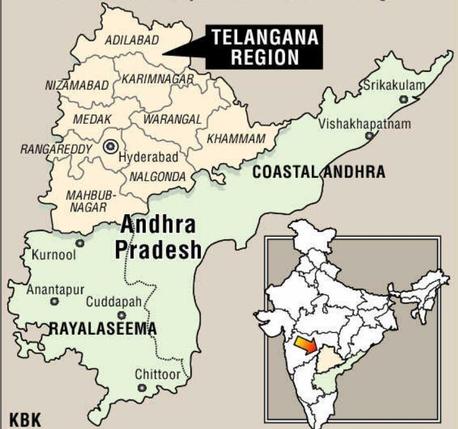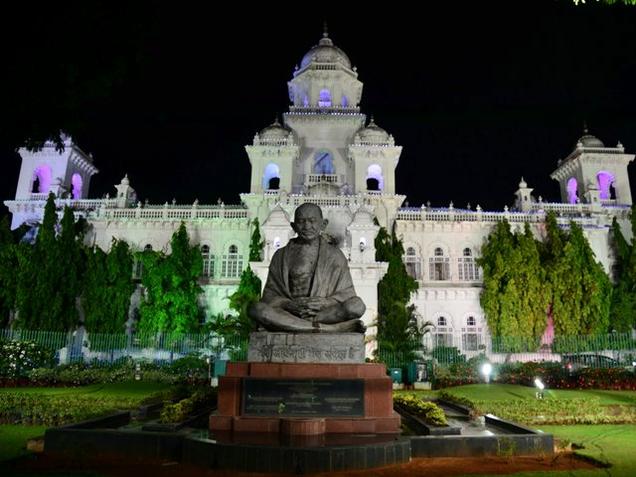
/ The HIndu
Telangana turns two on June 2 and the State government is pulling out all stops to make it memorable. The Telangana Formation Day also gives us an opportunity to revisit some of the key events that led to the creation of the 29th State of India.
The seeds of Telangana struggle were sown in 1955 when the recommendation of the States Reorganisation Commission to retain Hyderabad as a separate State went unheeded. Telangana leaders accused the people of Andhra of “colonising the region” by grabbing their jobs and land, and the government of not investing in the region’s infrastructure. On November 1, 1956, Telangana merged with the State of Andhra, carved out of erstwhile Madras, to form Andhra Pradesh, a united state for the Telugu-speaking populace.
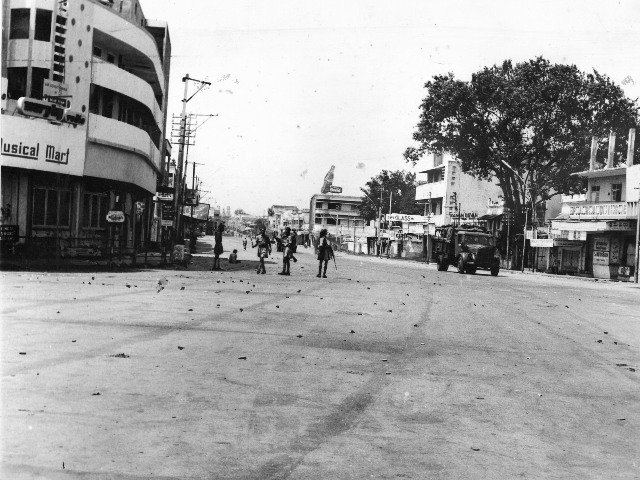
The State witnessed a violent ‘separate Telangana’ agitation in 1969 and a ‘separate Andhra’ agitation in 1972. The 1969 stir was primarily started by social groups, students and government employees. Following the agitations, a six-point formula was evolved by Prime Minister Indira Gandhi for “accelerated development of backward regions and preferential treatment to local candidates in employment.”
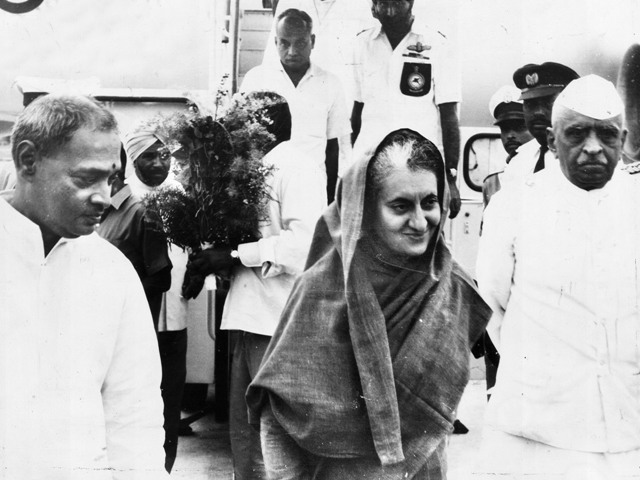
Thereafter, the Telangana movement took a political turn. In 1997, the BJP supported demand for Telangana State and in the subsequent year, which saw an election, the party promised ‘one vote two States’. But the push intensified in 2001, when K. Chandrasekara Rao floated the Telangana Rashtra Samithi (TRS) to revive Telangana movement. Many believed it was the creation of Chhattisgarh, Jharkhand and Uttaranchal (now Uttarakhand) states that spurred the demand for Telangana. Three years later, the TRS fought elections in alliance with the Congress and won five Lok Sabha and 26 Assembly seats.
Karimnagar — the hotbed of the movement
During the first phase of the movement in 1969, Karimnagar district emerged as the centrestage for the intensification of agitations. While campaigning for the 2004 elections, Congress president Sonia Gandhi had also announced that she would respect the sentiments of the Telangana people in Karimnagar town by addressing a public meeting. Mr. Rao had contested as MP from the Karimnagar Parliament constituency in 2004.
In 2006 and 2008 by-elections too, he won from the same constituency. In all by-elections in the district, people voted in TRS candidates.
Karimnagar was the host for the intensification of Telangana statehood movement in 2009, when the TRS president had decided to launch a fast-unto-death, demanding the Telangana State. It was the same town where police had arrested KCR, who was on his way to launch his fast-unto-death in Siddipet town.
The movement had spread like a wildfire after his arrest in Karimnagar and several youth had committed suicide for the cause of Telangana.
Following the continuation of his fast-unto-death while in a hospital, the Union government had announced the formation of separate Telangana State on December 9, 2009. However, the government had again gone back on the issue on December 23, 2009.
About 17 pro-Telangana students had launched a fast-unto-death in front in the Osmania University campus after the Centre backtracked on the statehood issue.
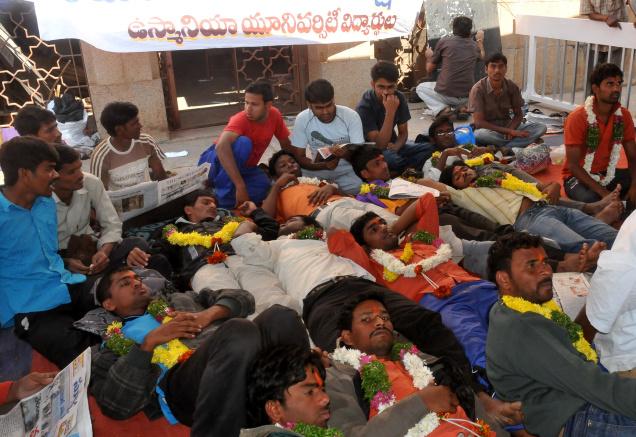
Sri Krishna Committee report
On February 3, 2010, a panel headed by Justice (Retd.) B.N. Srikrishna was formed to “bring about a permanent solution” to the statehood demand. The panel met 30 times, visited 23 districts and 35 villages and held interactions with about 100 organisations.
The report of the Committe for Consultation on the Situation in Andhra Pradesh was released by the then Union Home Minister P. Chidambaram, to representatives of political parties from the State on January 6, 2010. It said, “The united Andhra option is being suggested for continuing the development momentum of the three regions and keeping in mind the national perspective. With firm political and administrative management it should be possible to convey conviction to the people that this option would be in the best interest of all and would provide satisfaction to the maximum number of people in the state.”
Click here to download the full report (PDF- 7.1 MB)
Click here to download the summary. (PDF- 846.5 KB)
Click here to download the Appendices to the report (PDF- 10.4 MB)
___________________________________________________________________
The Hindu Editorial
The Editorial, dated February 15, 2010, said that “carving out smaller States is too important and complex an issue to be taken in the heat of inflamed passions and under the pressure of political agitations.” It called for peace and non-violent means to get to the bottom of the issue. “Those clamouring for a separate Telangana will surely help their own cause by extending full cooperation to the Srikrishna panel, instead of vitiating the atmosphere again by instigating violence or asking elected political representatives to resign. All stakeholders must ensure that the panel succeeds in its rather difficult task of balancing the interests and concerns of different sections and recommending a plan of action towards a solution, as set out in the terms of reference.” More…
______________________________________________________________________
Cabinet approves bifurcation
In December 2013, the Union Cabinet approved a Bill for the creation of Telangana State with 10 districts, paving the way for the bifurcation of Andhra Pradesh. The Cabinet had broadly approved most of the recommendations made by the Group of Ministers constituted to consider the contentious issues.
The Cabinet’s approval came after the Congress Core Group decided to adhere to the Congress Working Committee’s decision on a Telangana with 10 districts. Meanwhile, Osmania University in Hyderabad was slowly becoming the nerve-centre of the Telangana agitation. Student activists continued their agitation along with political leaders in the struggle.
Passage of the A.P. Reorganisation Bill
– The A.P. Reorganisation Bill was passed in 2014, listing out the specifics involved in the process of bifucation. Some of the salient features the Bill were:
– The Bill envisages Hyderabad as the common capital. The Andhra Pradesh Governor will be Governor for both successor States of Andhra Pradesh and Telangana.
– The common capital includes the existing area notified as Greater Hyderabad Municipal Corporation. Centre shall form expert committee to suggest a new capital of Andhra Pradesh within 45 days.
– The Centre will set up an apex council for the supervision of Krishna and Godavari rivers on water sharing.
– 25 Lok Sabha seats to be allocated to residuary Andhra Pradesh and 17 Lok Sabha seats to Telangana.
– Residuary Andhra Pradesh will get 175 Legislative Assembly seats and Telangana 119.
– Existing admission quotas in all government or private, aided or unaided institutions of higher, technical and medical education shall continue for 10 years during which common admission process shall continue.
– The Polavaram Irrigation Project will be declared as a national project and the Centre will take under its control the regulation and development and the Tungabhadra Board will continue to monitor the release of water to high level canal, low level canal and Rajolibanda diversion scheme.
– The High Court at Hyderabad will be common for both States till a separate High Court is set up for residuary Andhra Pradesh.
– Any dispute, regarding financial assets and liabilities, shall be settled through mutual agreement failing which by the Centre’s order on the advice of the Comptroller and Auditor General.
– All properties situated outside existing Andhra Pradesh will be apportioned between the successor States on the basis of population ratio.
– Greyhound and OCTOPUS forces of the existing Andhra Pradesh will be distributed after seeking opinions from the personnel and each of these forces.
– The award made by the 13th Finance Commission to the existing State of Andhra Pradesh will be apportioned between the successor States by the Centre on the basis of population and other parameters.
When years of struggle came to fruition
The last general elections to the Assembly and Lok Sabha seats in united Andhra Pradesh was held in two phases on April 30 and May 7. It was decided that the counting of votes for both phases would be taken up on May 16 and election process will come to an end by May 28. It was notified that the States of Telangana and residual Andhra Pradesh would come into effect from June 2.
The chief architect of the separate Telangana agitation, K. Chandrasekhar Rao, was sworn in Chief Minister of Telangana. Mr. Rao’s son K. Taraka Rama Rao and nephew T. Harish Rao, who took active part in the agitation, were among the 11 Cabinet Ministers sworn in at a simple ceremony, punctuated by slogans of ‘Jai Telangana’. Governor E.S.L. Narasimhan administered the oath of office.
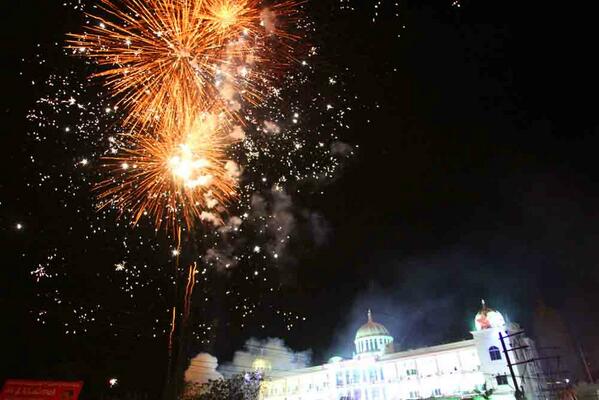
(Compiled by Sriram Sivaraman)
source: http://www.thehindu.com / The Hindu / Home> National> Telangana / by Internet Desk / June 01st, 2016
